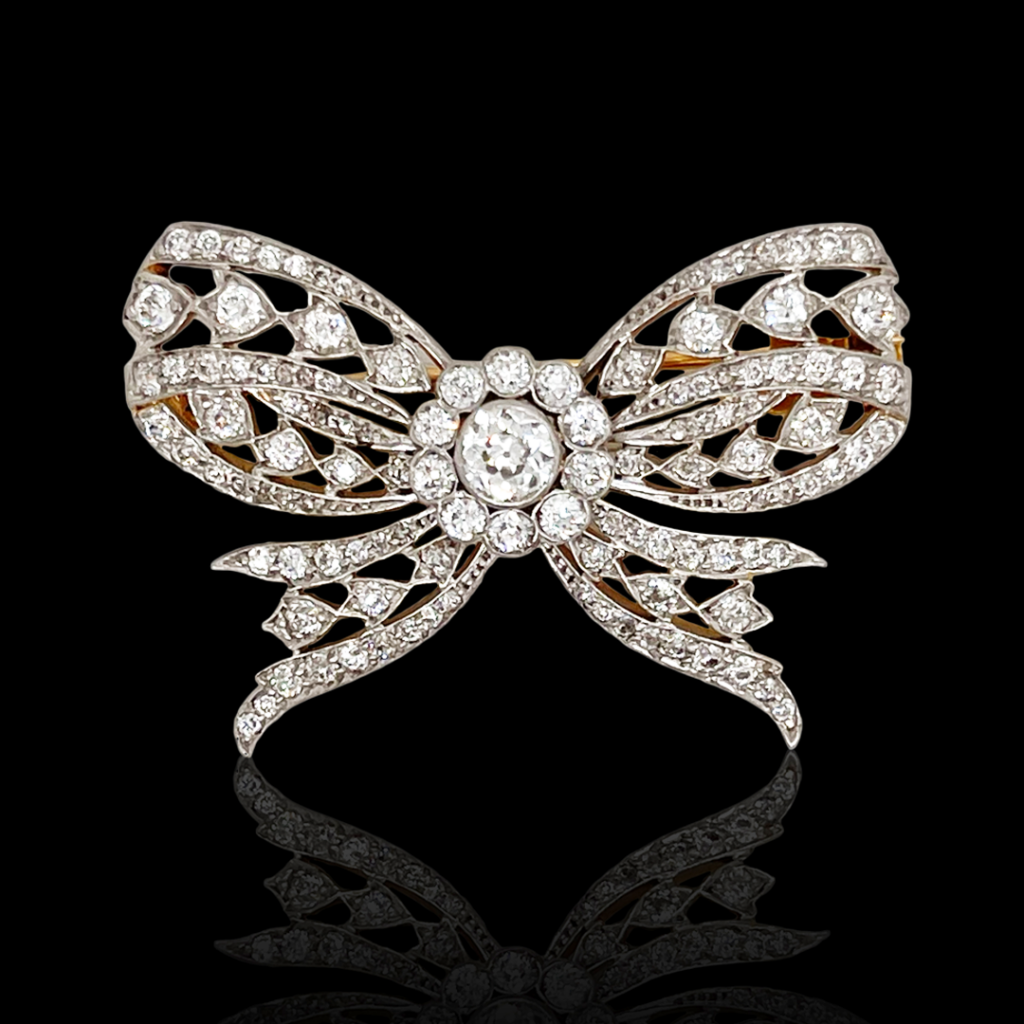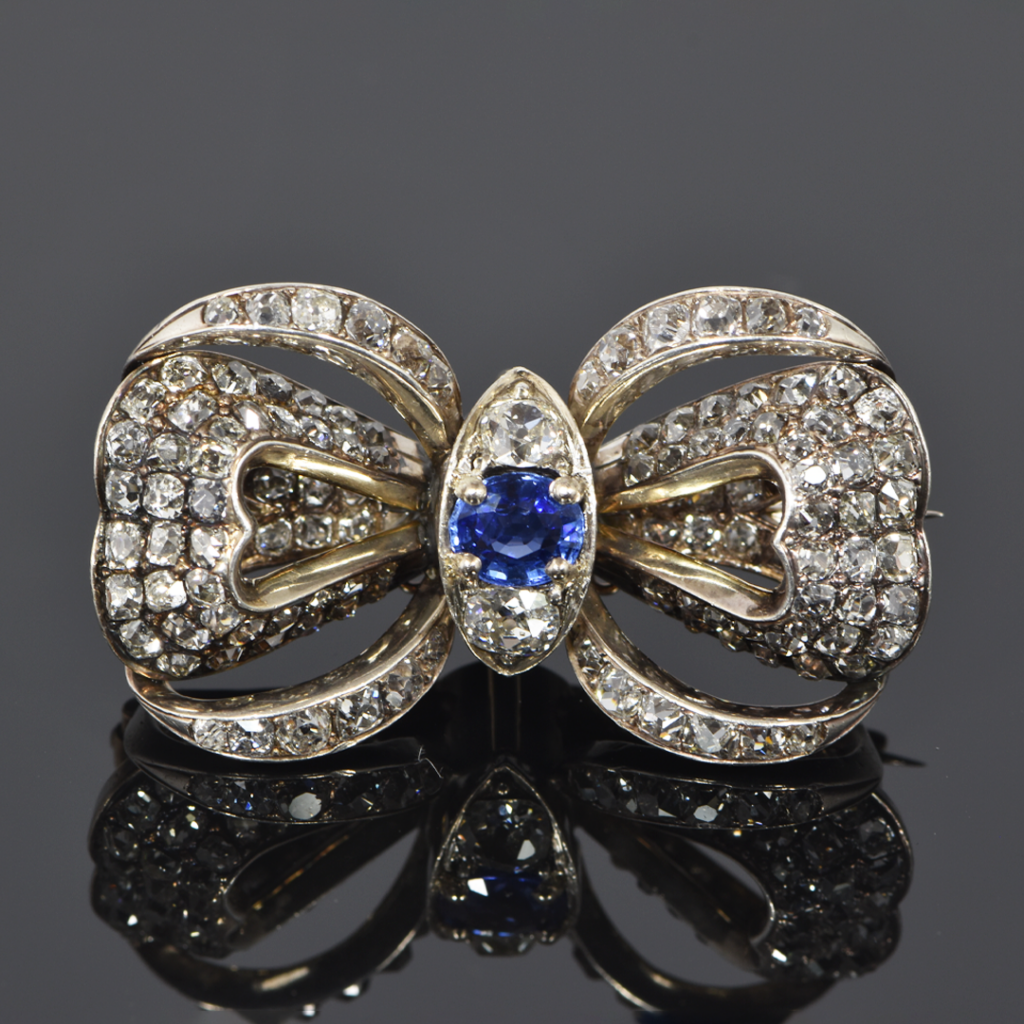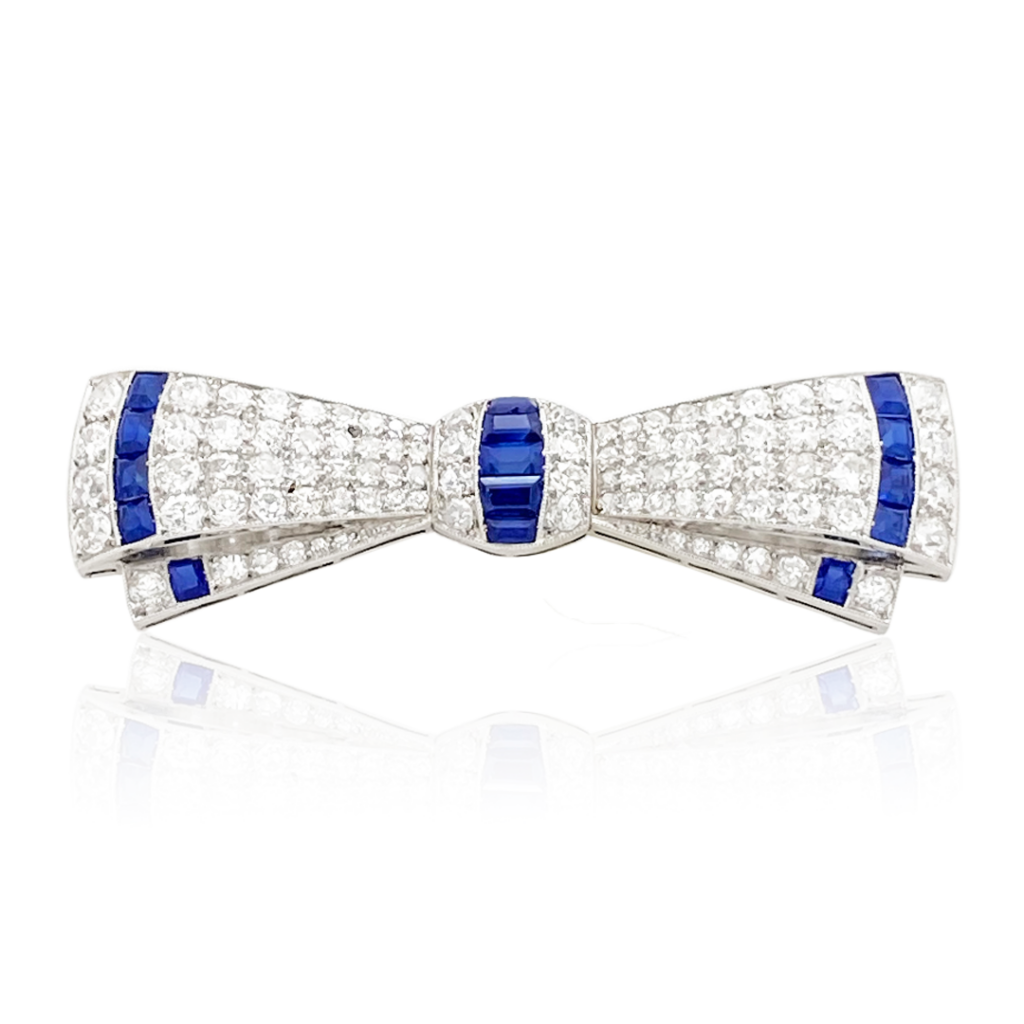Bows and more bows are everywhere with designers from Chanel to Miu Miu adorning their creations with bows on everything from blouses and gowns to handbags and shoes adding an extra touch of luxe where ever they are used. This year the hair bow is making a huge comeback and beautiful vintage bow brooches fit right in with this renewed love affair with bows, whether you are wearing them on a favorite jacket or in your hair.
What A Bow Says
It’s really no surprise that designers are embellishing with bows. Throughout centuries ribbons and bows have been an integral part of fashion. Sometimes they are more prominent than other times, but the best thing about bows is that it is a motif that has been in style for centuries and will stay in style. Fanciful and fun, bows add decoration to clothes as well as a dimensional aspect. Beyond fashion, bows also have symbolic meaning. Bows are a symbol of romance, love and marriage, associated with joy, connection, devotion and protection in relationships. A bow worn on a ribbon around the neck is a sign of playfulness, but wearing a bow by the heart lets the world know that you are in love
Bows As Status Symbols

During the Middle Ages bows were used to keep clothing closed, while Knights in medieval times used ribbons and bows to show their Order. However, as the years progressed ribbons and bows became associated with wealth and status as fine fabrics for ribbons was scarce and very costly.
During the 1600s bows became increasingly fashionable for both men and women. Ribbons and bows were used to attach ceremonial medals and jewelry to clothes. Bows were also worn on dresses, shoes and in the hair. It was right about this time that the bow motif began to appear as jewelry rendered in precious metals with diamonds. Brooches were a popular way to wear bow jewelry. Some of the first bow brooches, known as Sévigné, were flat and symmetrical, but transformed into looser bows over the years. The Sévigné brooch style was named after the Marquise de Sévigné, a member of the French Court of King Louis XIV, who was known for writing humorous letters about royal life.
Marie Antoinette Loved Bows
By the late 1600s and well into the 1700s, bows were the peak of fashion, Marie Antoinette the style influencer of her time, was known to love bows, which further bolstered their popularity.
Stomachers, sometimes called bodice brooches, some in the form of bows, were worn in the 1700s and 1800s. These oversized jewels were placed on the bodice and pretty much covered the entire bodice area, it was not unusual for these bows to have pieces that moved as they were being worn. These brooches required heavy fabric to hold them in place. When styles changed in the early 1900s, as women abandoned their corsets and lighter weight fabrics became fashionable, the stomacher was no longer worn. It’s rare to find a stomacher intact today as many were taken apart and turned into other jewelry. During the 1700s girandole earrings were another way of wearing bows. Girandole earrings have a large stud with a central motif that was often a bow with three pear-shaped gems dropping from the center and sides.
The bow maintained its star status as a jewelry motif into the 1800s. When Queen Victoria was mourning the death of her husband Prince Albert, she sometimes wore black bow jewelry, which kept bows in the fashion spotlight.
Lacy Edwardian Bows

During the Edwardian era, in the late 1800s and early 1900s, bow jewelry evolved once again. Technology to work with platinum had been developed and now jewelers were able to fabricate jewels that were light and lacy. The white of the platinum was the perfect backdrop for the white-on-white diamond and pearl bows that reflected the formality and the elaborate, intricate design of that era. After World War I bow brooches were worn near the heart as a way of remembering and honoring those who had died in the war.
The Bow Evolves
Bows continued to be popular during the Art Deco era in the 1920s and 1930s. The flat, symmetrical and angular design codes of those years resulted in tight bow-tie brooches that towards the end of those two decades softened into a looser, more flowing form. When World War II came along, precious metals and gems were scarce. During the 1940s, the bow changed again, becoming large and dimensional while being crafted in gold and maybe embellished with some diamonds and gems, some even draped like fabric. The 1950s saw a return of platinum and diamond bows in very refined forms. While there was bow jewelry in the 1960s, 1970s and 1980s they were quieter and less ubiquitous than in previous years and once we got through the minimalism of the early 1990s, bows began returning as a fashion favorite and that popularity has grown even stronger in recent years.
Featured image (top of page): Georgian, oversized loop bow brooch, old mine diamonds, silver topped gold, courtesy Paul Fisher (@paulfisherjewelry).
Authored by Amber Michelle



